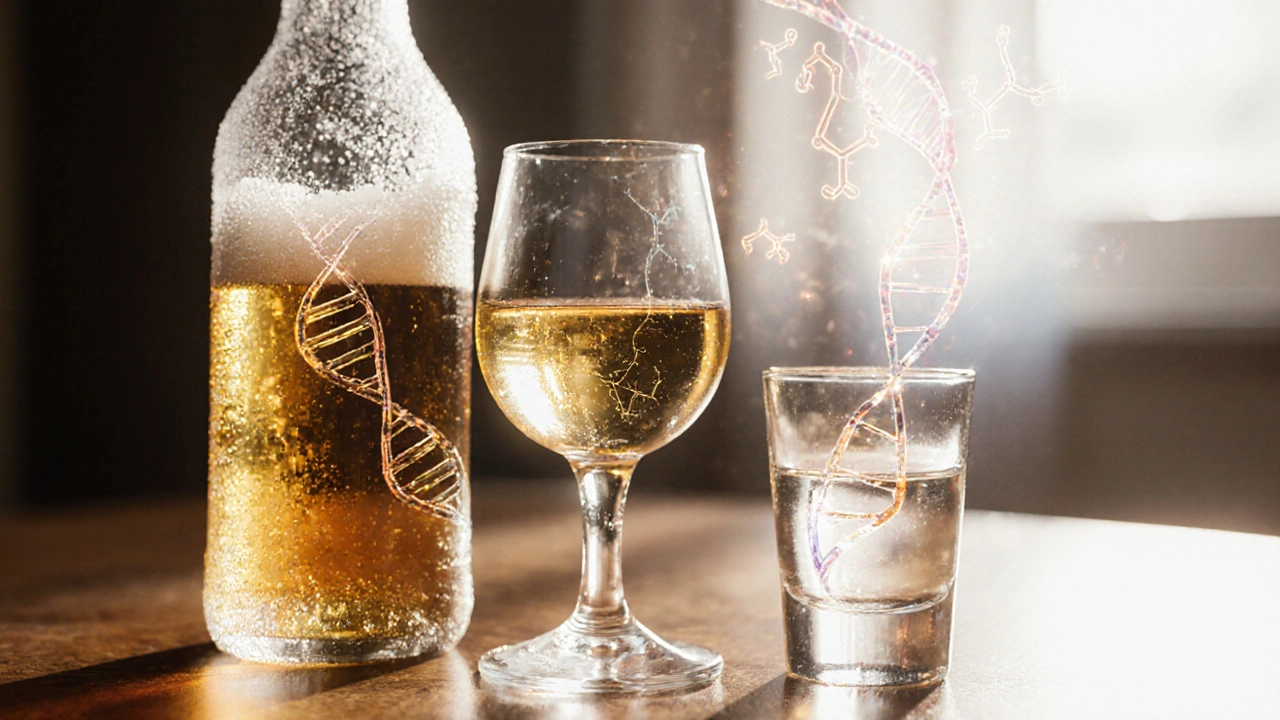Alcohol Related Cancer: What You Need to Know
When working with Alcohol related cancer, cancers that develop partly because of regular alcohol intake. Also known as alcohol‑associated cancer, it poses a serious health challenge worldwide, you’re really looking at a group of diseases that share a common cause. One key member is Liver cancer, a tumor often linked to chronic drinking, another is Head and neck cancer, including cancers of the mouth, throat and voice box tied to alcohol use. Even Breast cancer, which can be influenced by alcohol consumption in women falls under this umbrella. Alcohol consumption increases risk of these cancers (Alcohol consumption → higher cancer risk) and prevention strategies can lower the odds (Effective prevention → reduced incidence). Below we’ll break down the main types, why alcohol matters, and what you can do today.
Key Cancer Types Linked to Alcohol
Scientists have mapped a clear line from drinking to specific tumors. Heavy, long‑term intake damages DNA in liver cells, paving the way for liver cancer. At the same time, alcohol acts as a solvent, allowing carcinogens from tobacco to stick to the lining of the mouth and throat, which fuels head and neck cancers. For women, each drink adds roughly a 7% increase in breast cancer risk because alcohol raises estrogen levels. These three examples illustrate how a single lifestyle factor can trigger distinct biological pathways, yet they all converge on the same overall label—alcohol related cancer.
Risk isn’t limited to the amount you sip; how you drink matters too. Binge drinking spikes blood‑alcohol concentration, leading to acute inflammation that can accelerate cell mutation. Combining alcohol with smoking multiplies the danger—studies show a synergistic effect that triples the odds of developing head and neck cancer compared to either habit alone. Even moderate daily drinking over years adds up, especially when genetics already predispose someone to weaker DNA repair mechanisms.
Across the globe, the burden of alcohol related cancer is staggering. The World Health Organization estimates that alcohol contributes to about 5% of all new cancer cases, with the highest percentages in Eastern Europe and parts of Asia where heavy drinking patterns prevail. In the United States, liver cancer rates have risen by more than 50% in the past two decades, and a sizable share of that rise is tied to alcohol‑related liver disease. Meanwhile, head and neck cancers still account for roughly 3% of all cancers but carry a disproportionate mortality rate because they’re often diagnosed late.
Because the link is so strong, public health guidelines focus on clear, actionable steps. The safest route is complete abstinence, but the next best move is to stay below the recommended limits—no more than two drinks per day for men and one for women. Adding regular screening to the mix—ultrasounds for liver health, oral exams for early signs in the mouth and throat, and mammograms for women—can catch problems before they spread. Nutrient‑rich diets, especially those high in antioxidants like berries and leafy greens, help counteract oxidative damage caused by alcohol metabolites.
Armed with this background, you’ll find the articles below dive deeper into each cancer type, compare treatment options, and share practical tips for cutting down alcohol safely. Whether you’re looking for prevention ideas, want to understand how alcohol fuels specific tumors, or need guidance on managing an existing diagnosis, the collection gives you the detailed, easy‑to‑follow information you need next.

How Alcohol Consumption Raises Carcinoma Risk: What the Science Says
Explore how alcohol consumption contributes to carcinoma risk, the science behind it, which cancers are most affected, and practical steps to lower your chances.